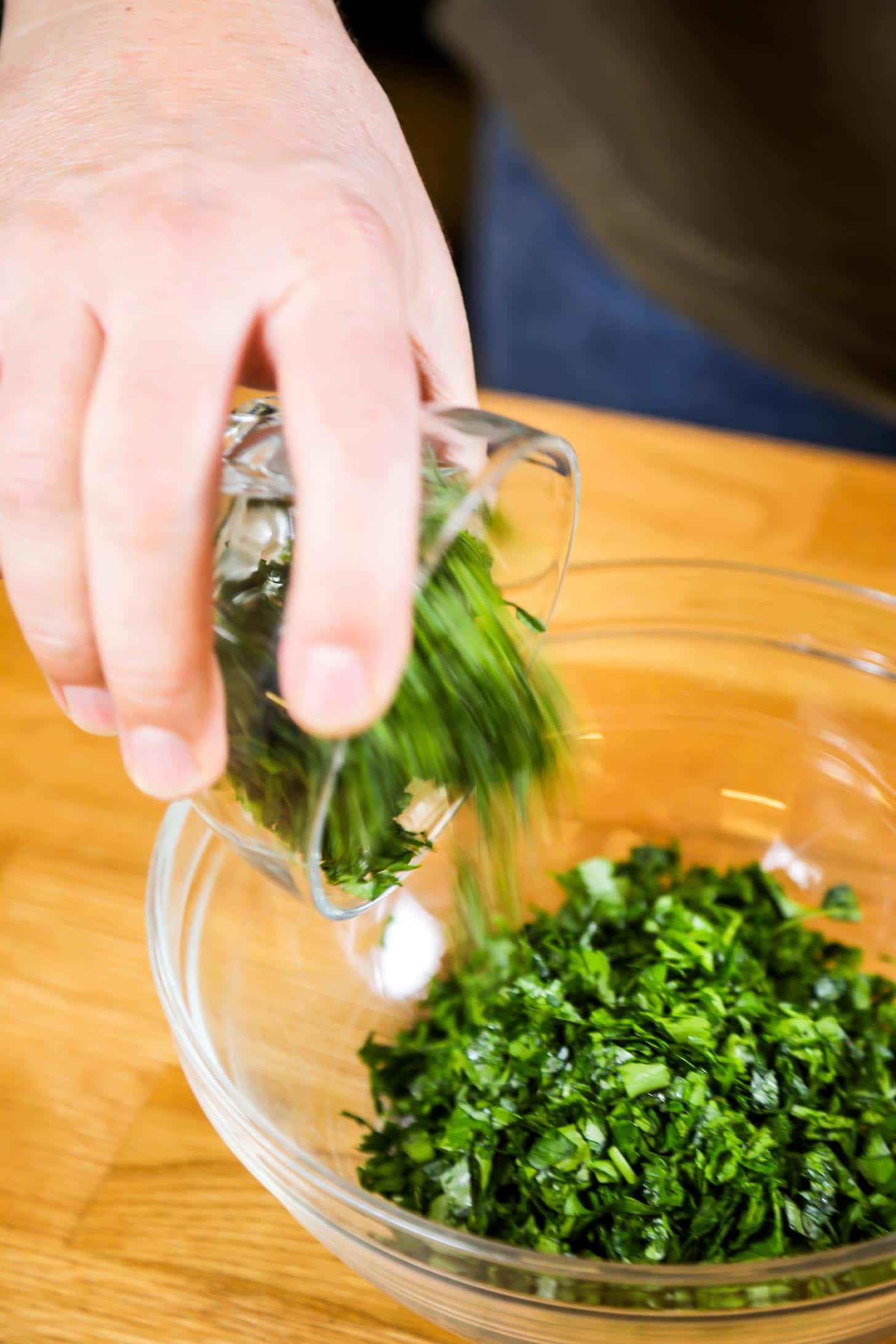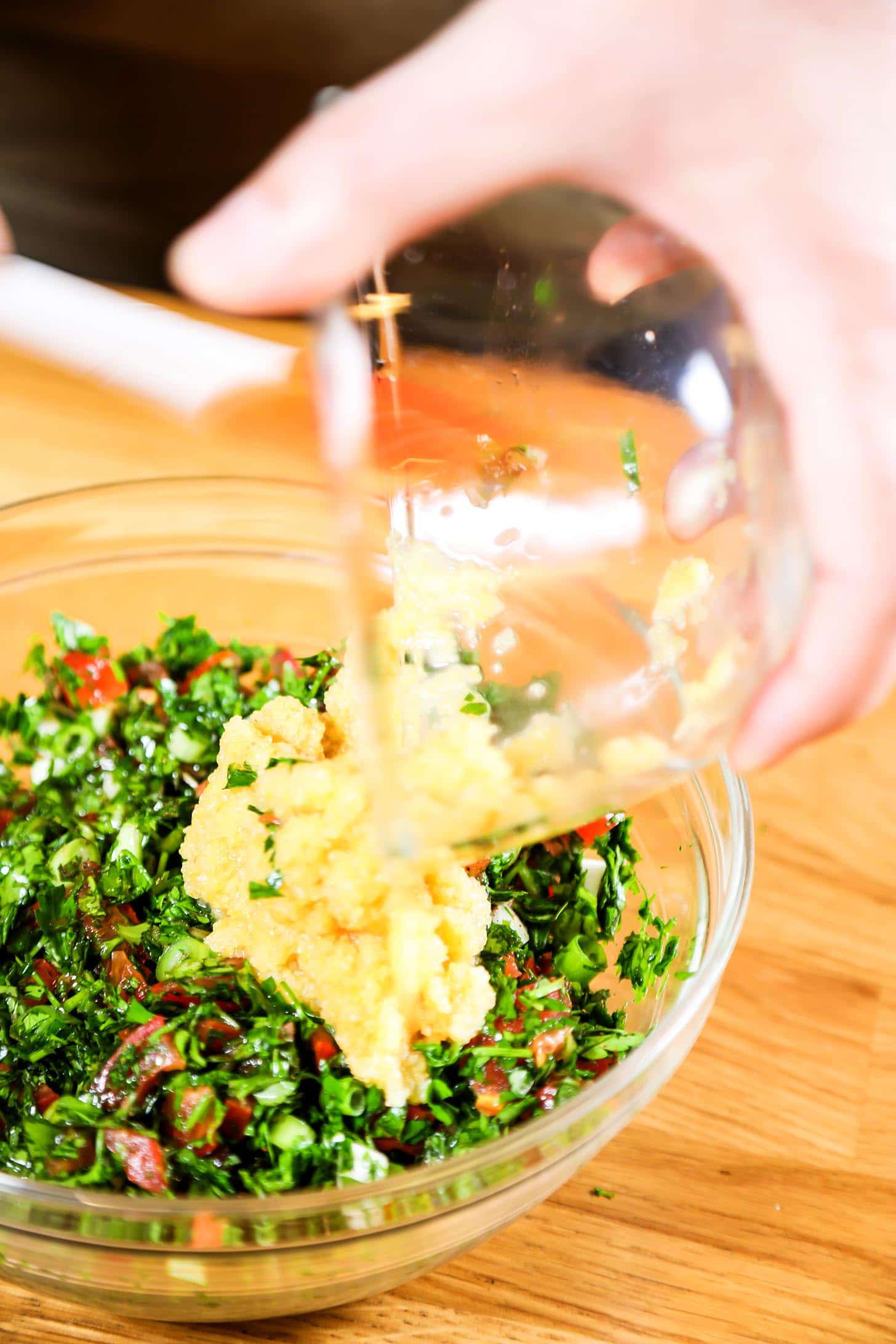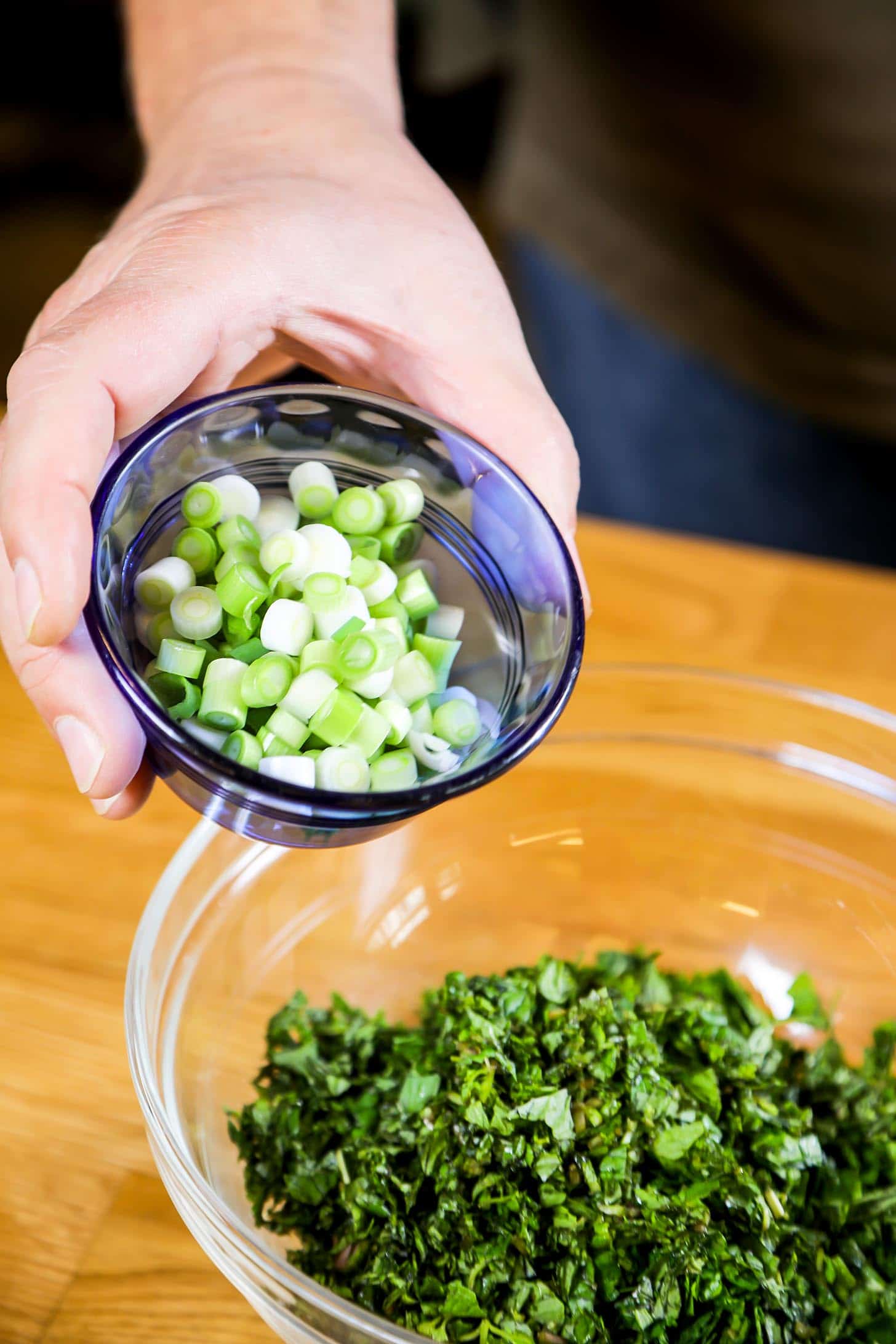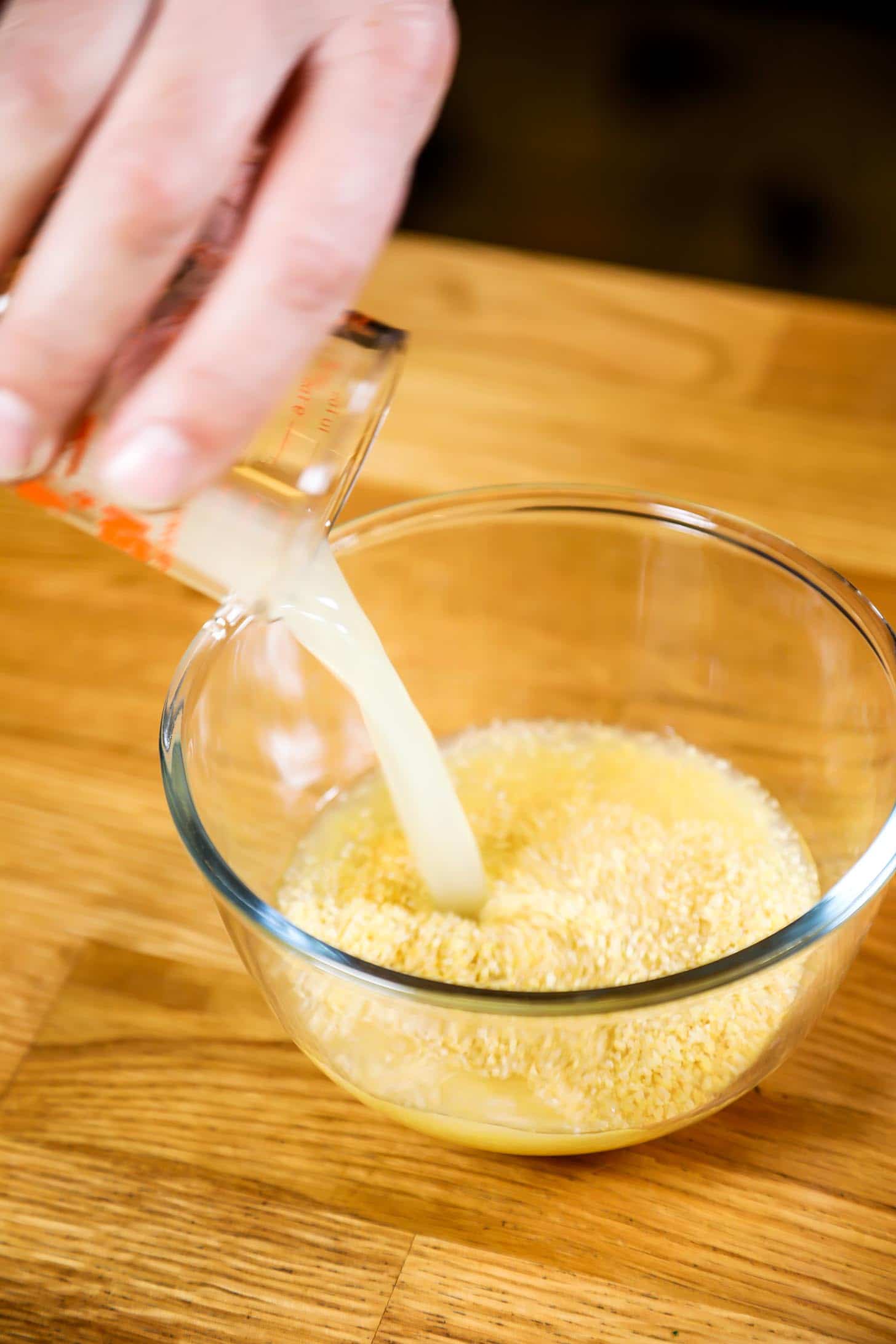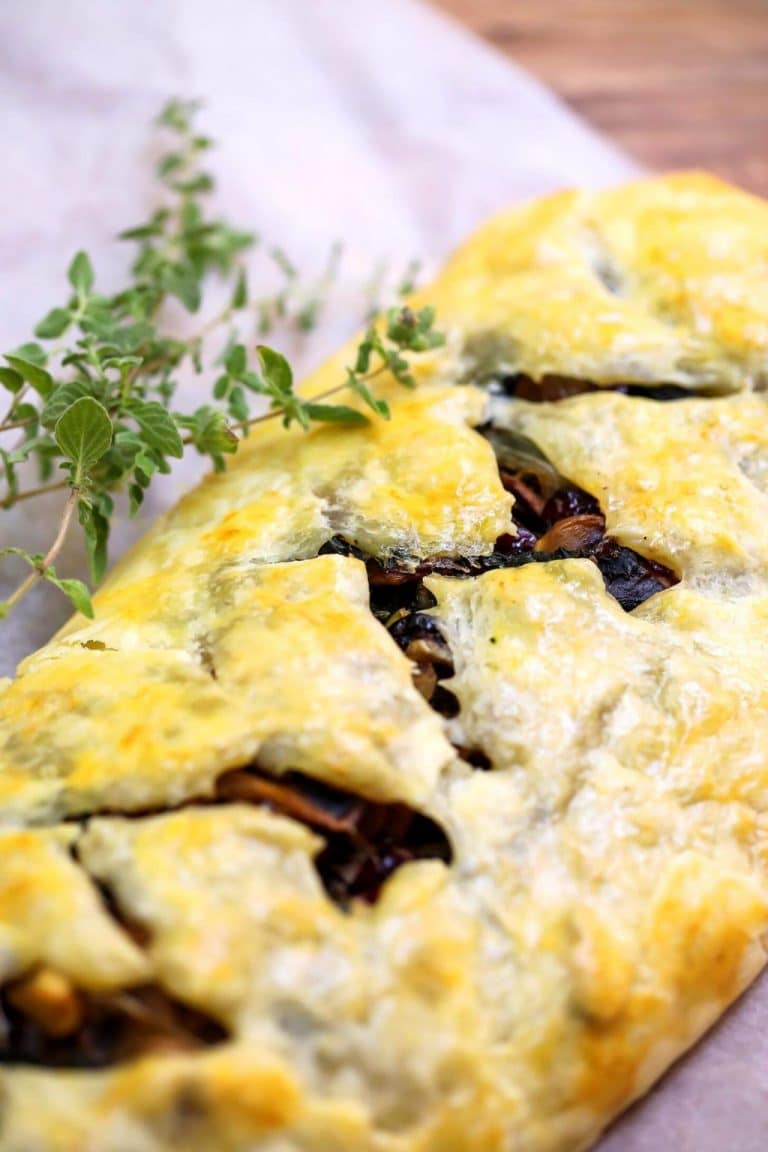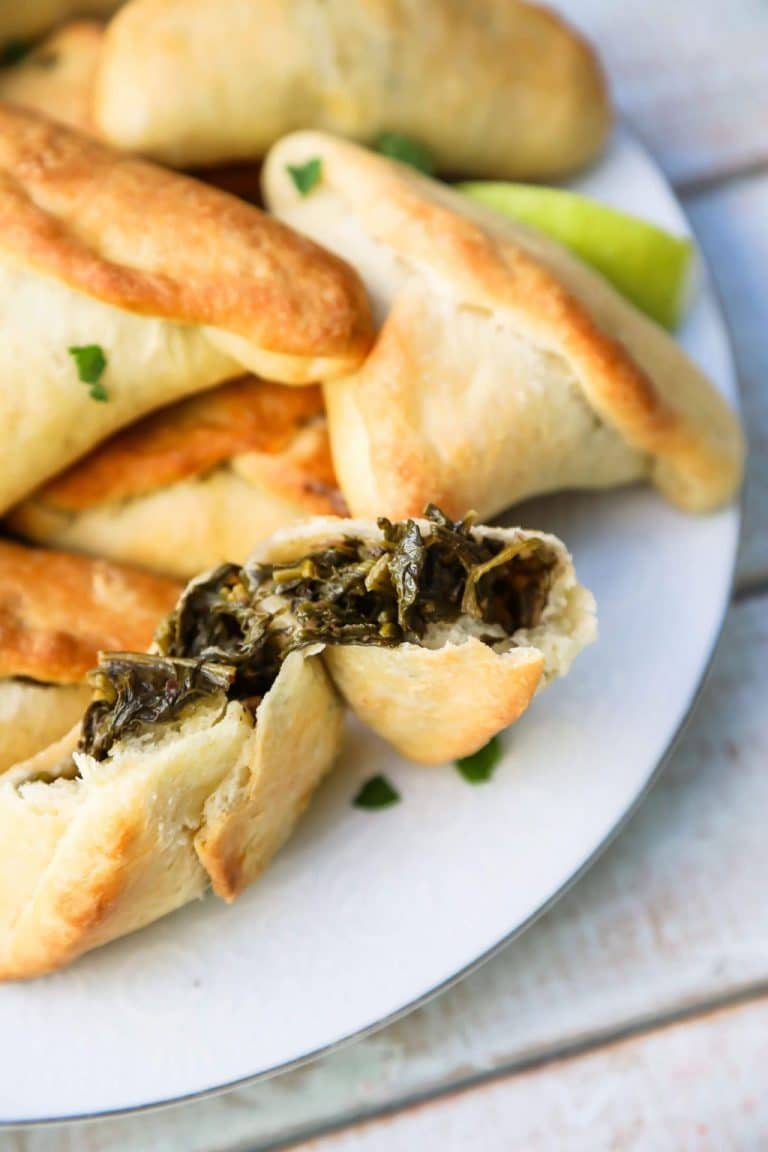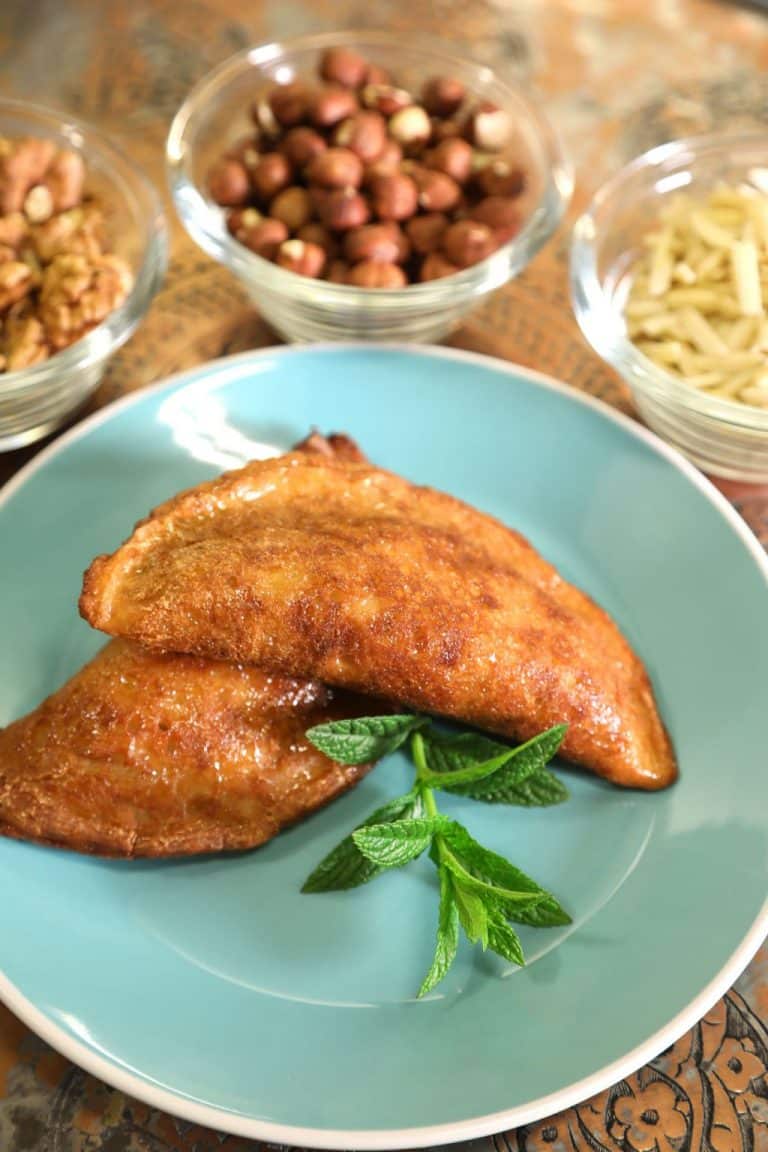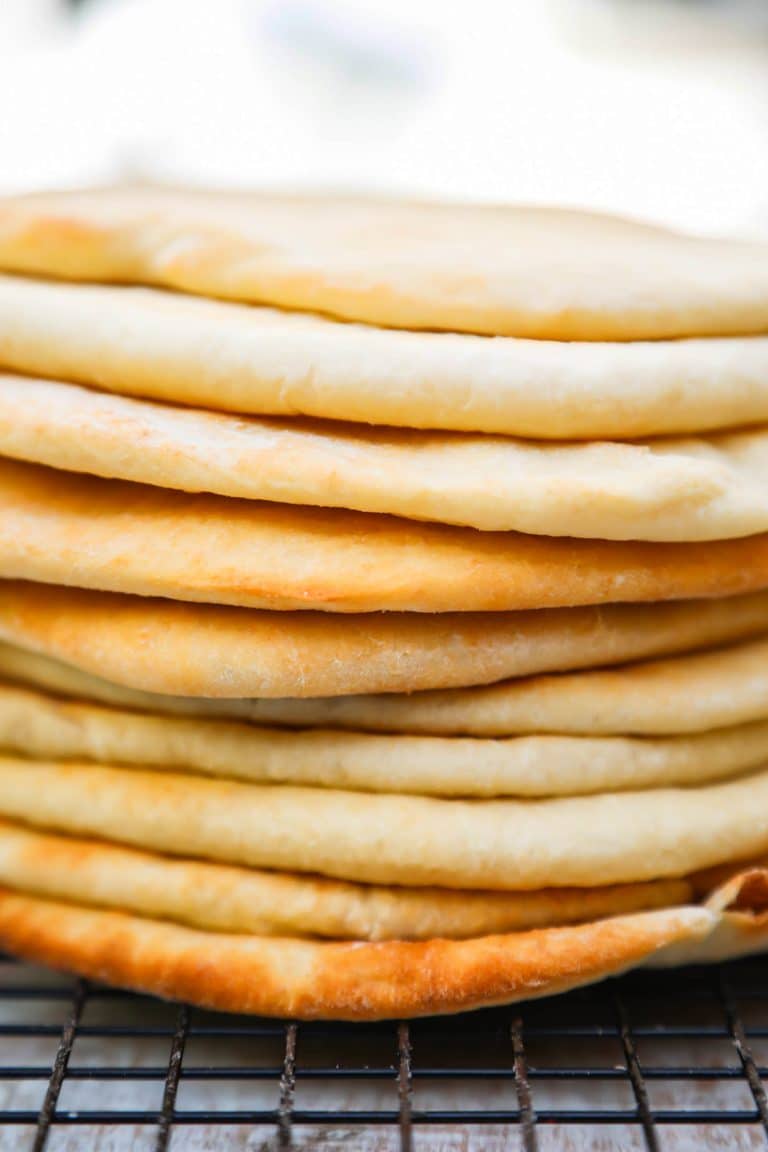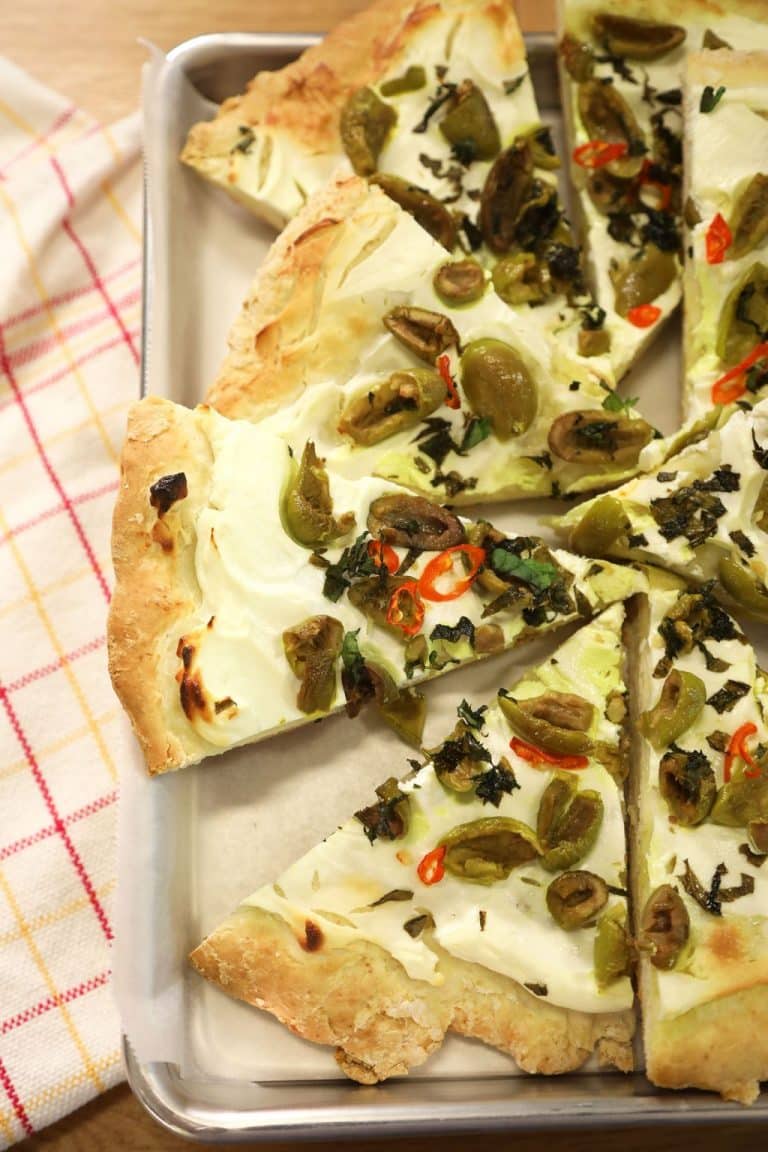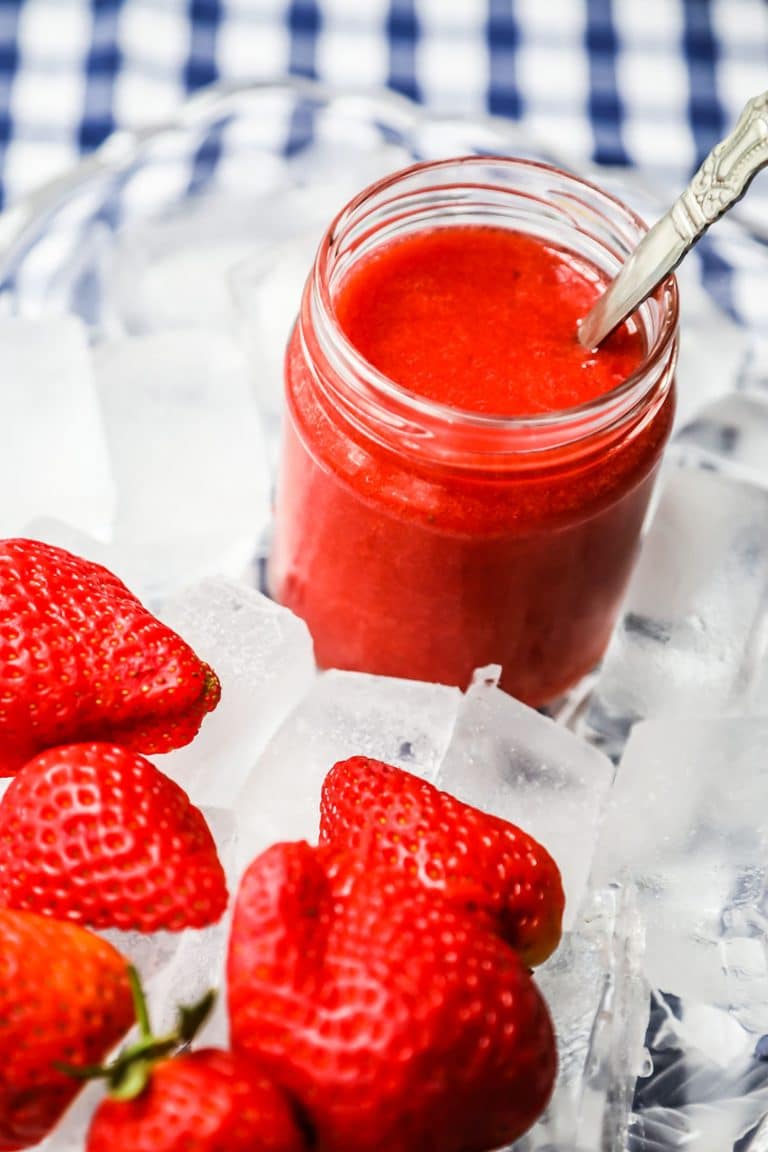Tabouli Salad (The Lebanese Way)
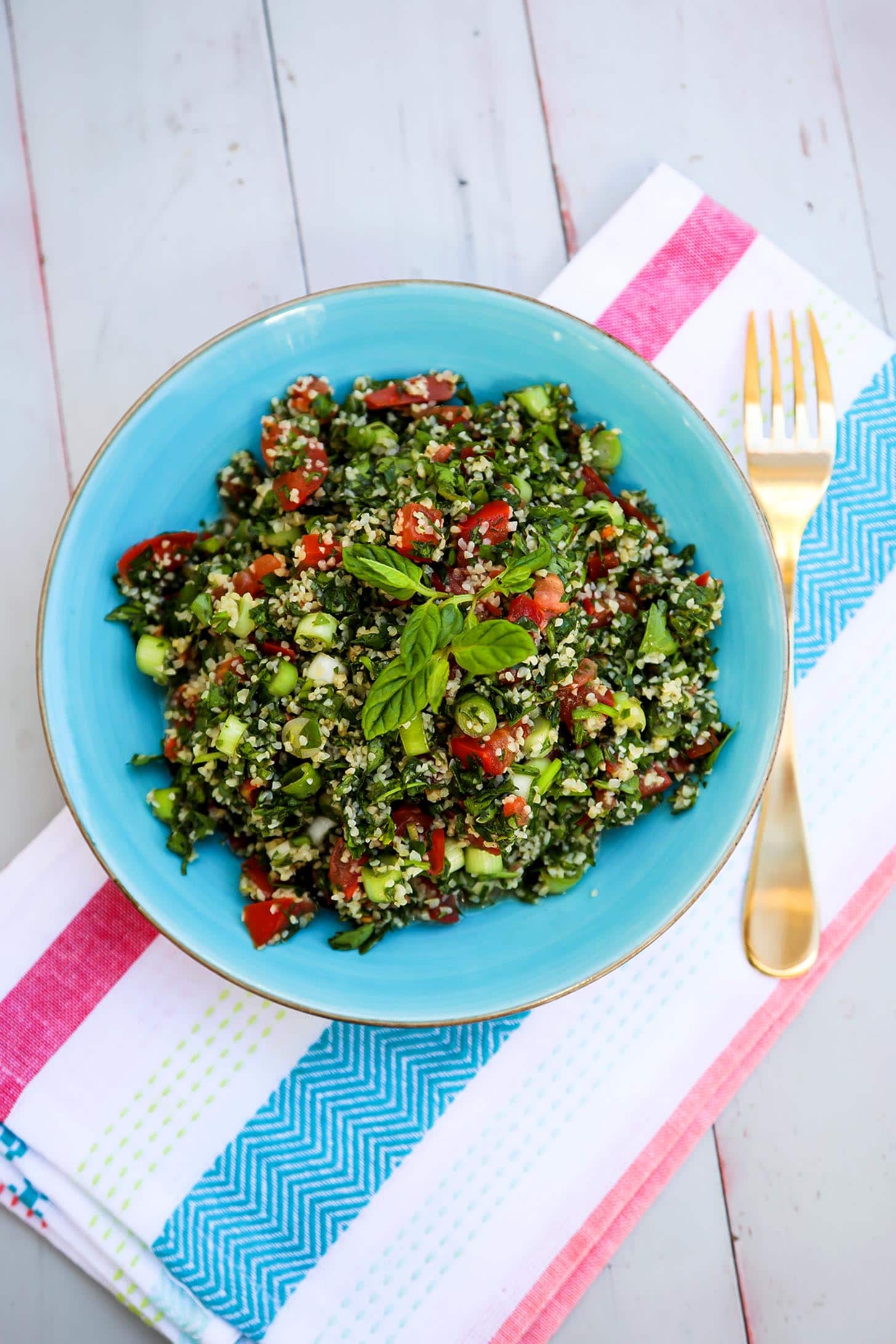
Tabouli salad is definitely a staple of the Levantian kitchen, made slightly differently from country to country.
It is a bit of a misunderstood salad in many western countries, where it is more often made as a bulgur salad.
But tabouli is actually a salad primarily made of finely chopped parsley.
Herbs like parsley, and mint are used as much more than just a garnish in the Middle East.
What is Tabouli Salad?
Tabouli, or tabbouleh, is the national food of Lebanon, originating in the Lebanese Syrian mountains.
It seems to have originated in the Middle Ages as an alternative to all the meat heavy foods of those days.
I would assume it originated from people who did not have easy access to meat, and therefore turned to plants.
That being said, it is an incredibly healthy salad made from parsley, fresh mint, onions and tomato.
It has a little bit of bulgur (cracked wheat) in it, providing some protein to the dish, along with olive oil and lemon juice.
There are variations to how this salad is made depending on which country you are in.
Some tabouli recipes will soak the bulgur wheat in boiling water and some in lemon juice for an extra lemony flavor.
White or green onions, even red ones sometimes along with cucumbers, all can be found in tabouleh salad.
How to Make Tabbouleh Salad
My salad recipe starts with getting a bunch of the freshest parsley I can find, and washing it well.
Then the leaves are picked off the thicker stalks, since the stalks are not as tasty as the leaves.
The same goes for the mint leaves, we just want the leaves and no stems.
Then soak the bulgar wheat in the lemon juice and set aside to allow the bulgur to soak up the juice.
Chop the parsley and mint very finely, then chop the vegetables and put them all in a bowl.
In my salad I like to include a little allspice along with the salt and pepper to taste.
Then add the olive oil, lemon juice soaked bulgur and stir until well mixed.
Traditionally served on top of lettuce leaves, this Middle Eastern salad is fresh and delicious.
Is Tabouli Gluten Free?
Unfortunately tabouli is not gluten free due to the bulgur wheat included in the recipe.
Tabouli is also typically served as part of the mezze course, and often eaten with fresh pita bread.
Some people just leave the bulgur out of their salad if they are gluten intolerant, and others use quinoa instead.
What Are the Benefits of Parsley?
Parsley is full of antioxidants, which help prevent and repair cellular damage, these are in the form of carotenoids, flavonoids and vitamin C.
There are lots of nutrients in parsley such as vitamin K, and A with potassium, and folate.
Low in calories parsley also possesses bone building vitamins and minerals that help with bone density.
Parsley has antibacterial properties, improves heart health, and has cancer fighting properties.
Add parsley to your food in quantities larger than just a garnish for added healthy benefits.
The Other Ingredients
Mint – Mint has a ton of benefits including the ability to help with indigestion, and other bowel issues.
Bulgur Wheat – Bulgur is a whole grain rich in vitamins, nutrients, fiber and protein.
Green Onions – These onions have lots of good vitamins, support bone health and help prevent cancer.
Tomatoes – Reduce the risk of heart disease, boost digestive health, good for your vision, and so many other benefits.
Lemon Juice – Lemon juice has cancer fighting properties, as well as aiding in digestion, and can help with weight loss.
Olive Oil – Olive oil is full of healthy fats and antioxidants; it’s an anti inflammatory, fights against heart disease and so much more.
Allspice – This spice can help reduce pain, is an anti inflammatory and prevents infection.
What is not to like about this amazingly healthy salad?
Salad And the Arab Table
People in the Middle East are very fond of vegetables, and salads are still included as part of just about every meal.
Simple dressings of lemon juice, olive oil and salt accompany most salads, reflecting the flavors of the region.
The vegetables are what you would expect from most salads, such as cucumbers, tomato and onions.
But cabbage salad is popular, green beans, eggplant and cauliflower can also be found in salads.
One of my favorites is watermelon salad, with white salty cheese and mint, truly delicious and refreshing.
Where Did the Arab Salad Come From?
The Persians were big eaters of salad, as well as the Romans and Greeks, all of whom influenced foods in the Levant.
In early days food was foraged from the wild, with most people having little access to wildstock.
I would assume the green leaves of edible plants were eaten on a routine basis as the main form of sustenance.
During Roman times vegetables were dipped in, and seasoned with, salt water as a way to preserve them.
Those methods of preservation were the predecessor to modern day salad dressings.
The Arab peasants who worked the land were able to incorporate olive oil and lemons which grew locally as a way to preserve their food.
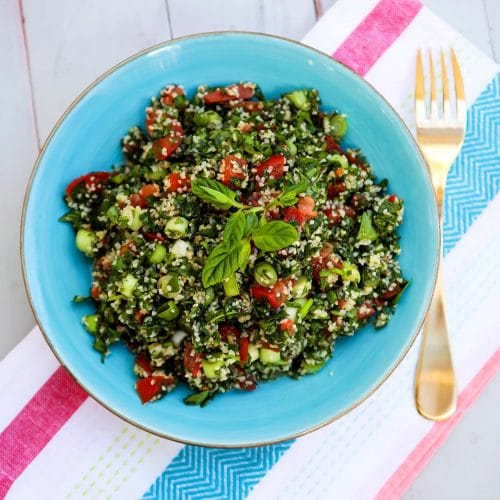
Tabouli Salad Recipe
Ingredients
- 1 bunch Parsley finely chopped
- 2 oz Mint finely chopped
- 4 Spring Onions chopped
- 1 Tomato large, diced
- 3 tbsp Bulgur Wheat
- ½ tsp Allspice ground
- ¼ cup Olive Oil
- 3 tbsp Lemon Juice
- Salt & Pepper to taste
Instructions
- Pour the lemon juice onto the bulgur wheat set aside and allow to soak in.
- Add chopped parsley and mint to a large bowl.
- Add the onions, tomato and allspice, and stir together.
- Stir in the olive oil.
- Add salt and pepper if using.
- Add lemon bulgur mixture.

